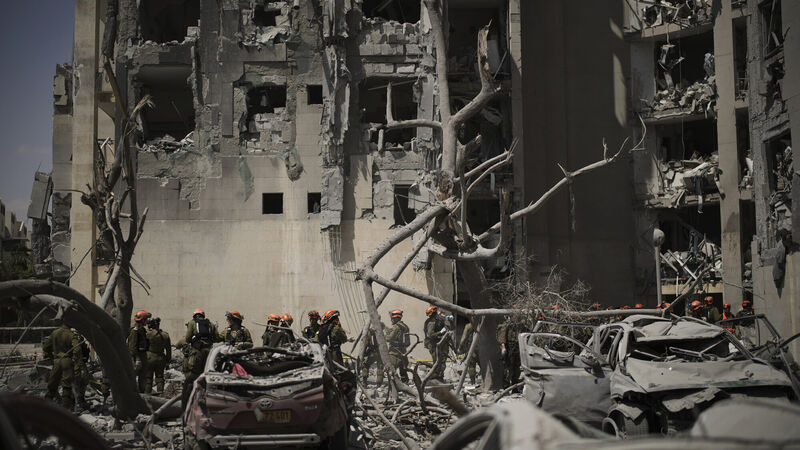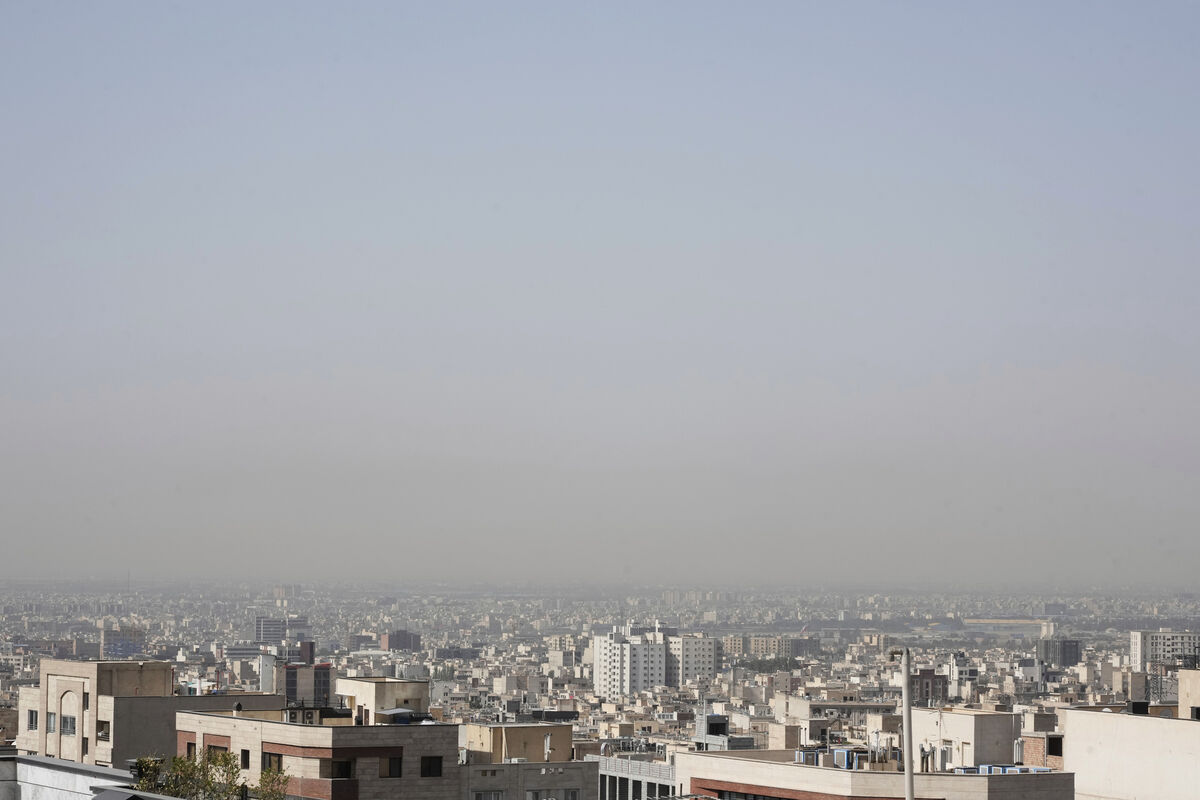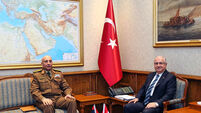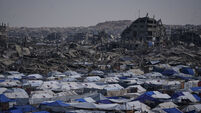Iranian response in Doha was only a carefully choreographed demonstration

Israeli soldiers at the site of an Iranian missile strike in Beersheba, Israel, on Tuesday. Photo: AP/Leo Correa
A year ago, in response to missile attacks on Israel from Iran’s three proxy organisations, Hamas, Hezbollah and the Houthis, Israeli aircraft attacked and seriously degraded the Iranian air defence system. It was also conducted in preparation for Israel’s recent attacks on Iran’s nuclear facilities.
It is worth recalling Iran’s reply. Giving two weeks warning to Israel, and its allies, it launched 400 missiles and drones at military targets, such as the air base from which some of the Israeli aircraft had flown their sorties against Iran. There were minimum casualties.
It was not an attack as such but a demonstration of firepower and only one tenth of Iran’s stockpiles of missiles were used. The bonus for Iran was that it lit up the Israeli air defence system with its strong points and weaknesses.
It showed up the Israeli air defence procedures and how they used the US, French and UK systems to plug gaps in their defences. Invaluable information for future operations against Israel was gained.
Monday’s attack on the US base in Qatar was also not a lethal attack, but a carefully choreographed demonstration. It was a symbolic gesture of defiance. It was really only a live target practice for Qatari air defence, but it looked good on TV.
Nevertheless, Iranian honour has been saved and a ceasefire between Israel/US and Iran has been achieved, however fragile.
For decades, Israeli prime minister Netanyahu had been calling for the destruction of Iran’s potential nuclear weapons capability, repeatedly claiming that Iran was within months, weeks, of having nuclear weapons.
Similar claims had been made against Iraq’s leader, Saddam Hussein, to justify the US/UK invasion of Iraq. Saddam did use chemical weapons against the Kurds in Northern Iraq, and both sides in the Iran-Iraq War, used chemical weapons against each other on the southern front.
Last week, I saw a former senior Iranian official in a 2015 repeat interview, recalling Saddam’s brutality, denying emphatically that the Iranians had ever used chemical weapons. This was completely untrue.
As a UN military observer in Iraq in 1989/90, there were unexploded phosgene and nerve gas shells in the southern area of operation, fired by the Iranians across the Shatt Al Arab waterway at Iraqi positions. Many were corroded and leaking.
In March, the US Director of National Intelligence, Tulsi Gabbard, concluded that Iran was a long way off from having a nuclear weapon and an effective delivery system.
Trump contradicted her, without explanation, creating the excuse to carry out the attack last weekend. He claims the nuclear facilities were obliterated. Only a ground inspection can verify if this is true and confirm that Iran’s capability to make a bomb has been removed.
The danger of a ceasefire breakdown remains and confidence-building measures should be put in place, in particular along the Straits of Hormuz. The US is boosting its military capabilities in the region.
Uncle Sam now has two aircraft carrier groups, (USS Carl Vinson and the USS Nimitz) in the area. A third carrier group, the USS G. Ford, will leave the naval base at Norfolk, Virginia, on Tuesday, to join them.
Still the Iranian Revolutionary Guard Corps could launch small boat hit-and-run attacks on the slow moving oil tankers going down the waterway.
The best option would be to get the Iranian leadership to accept limitations on their nuclear programme that would reassure the region, that they will not become a nuclear power. Behind the scenes, discussions on a possible ceasefire are underway.
Iran have always said they do not want nuclear weapons. Unfortunately, in May 2018, Israel pressured the US to withdraw from the EU-backed Iran Nuclear Deal, which had already achieved progress.
The Iranians will recover quickly from recent setbacks. They would have long foreseen the killing of their nuclear scientists, and back-up teams would be ready to continue their work.
Also, while a psychological blow, the death of senior military commanders is expected in wartime. That is why there is a military chain of command, and every nation has contingency plans, where even entire headquarters can be replaced by subordinate headquarters.
The Israeli intelligence services would advise their political leadership never to underestimate their Iranian opponents.
During the US Embassy siege in 1979, the staff shredded classified documents, using the most sophisticated shredders in the world, which reduced the paper to the size of a pinhead, smaller than the full stop at the end of this sentence. The Iranians were still able to reconstruct the documents.

For those following the war in Gaza, the sight of Netanyahu complaining about one Iranian missile impact on the Soroka hospital near Beersheba contrasts greatly with the dozens of Israeli Air Force attacks on hospitals and clinics in Gaza.
This, and other Iranian missile strikes on Beersheba, shows that Iran has the capability to hit the Israeli Nuclear Research Centre only 25 miles away near Dimona. Iran has also claimed that all the relevant material from the three attacked sites had recently been removed to safe locations.
The possible assassination of Supreme Leader, Ayatollah Ali Khamenei, raised by US and Israeli officials would be a grave mistake. The distinction between killing heads of government/heads of state and leaders of organisations is well established.
A head of government/head of state is very symbolic of the nation itself. Whatever the outcome of the present conflict, both Israel and Iran have to deal with each other afterwards.
Besides Khamenei has issued a Fatwa against Iran having nuclear weapons. His successor could very well lift the Fatwa.
Whatever about political, religious and ideological, differences, the root cause of this conflict stems back to the “Palestine Question”, and the failure of the present Israeli Government to acknowledge the rights of self-determination of the Palestinian people.
This was not always the case. During my time in Israel there were courageous Israeli and Palestinian leaders who were prepared to make the two state solution work.
The story of David and Goliath, or Dawud and Jalut, appears in both the Bible and the Koran. It is the same story, the story of the underdog who slew the giant with a sling shot.
Tellingly, it was God, or Allah, that gave David (Dawud) permission to take over from Saul as King. The six points on the Star of David (Megan David), and its centre, represent the seven virtues of a good king.
But who are the underdogs now?
- Dorcha Lee is a retired Army Colonel and defence analyst
















